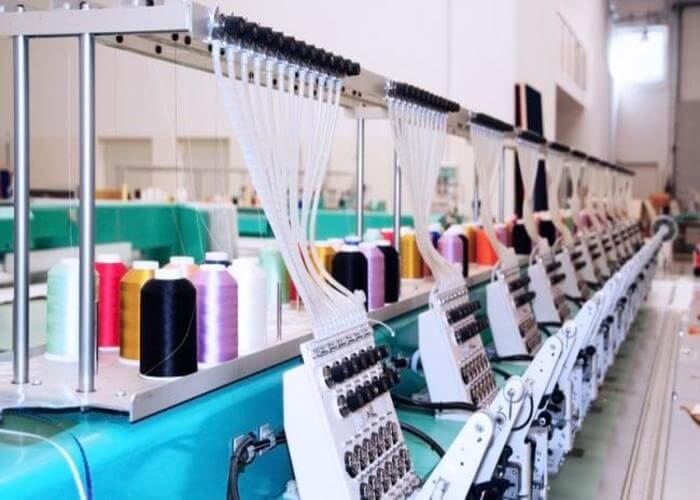Alan Schwartz, President, Superior Uniform Group, October 8, 2010
Introduction
We are presently witnessing an unprecedented global crisis with regard to availability and pricing of fabrics that could greatly impact the uniform business. The purpose of this paper is to provide you some historical background, bring you up to date and help you to understand what the future might look like.
The Spinners
Starting with the economic recession of 2008 and 2009, the apparel industry, along with many other industries, suffered horribly during this two-year period. Many yarn suppliers (spinners) to the textile industry could not survive through the recession and hence went out of business. Spinners provide the service of accumulating raw materials, primarily cotton and polyester, break it down and make thread (yarn). This yarn is then sold to mills where it is woven or knitted into fabrics.
In the beginning of 2010, other parts of the world started to recover from the economic recession much faster than the United States. Presently, economies are booming in China, India, Brazil and even the recovery in Western Europe is far ahead of that in the United States. As demand for apparel began to increase and because of all of the spinners that went out of business during the recession, there was not enough spinning capacity to deal with the new higher fabric demands. China anticipated the shortage way before anyone else and signed contracts to buy large amounts of yarn from Pakistan to supply their textile industry. Suddenly orders began to accumulate in Pakistan and they realized they were going to have severe yarn shortages because they had limited capacity and already had sold off a great amount of their yarn to the Chinese. This prompted major price increases in products manufactured in Pakistan. Prices jumped dramatically and quickly and have continued to increase steadily throughout the year.
The Cotton Story
Cotton is a natural resource that is planted and harvested. There are four main cotton-growing regions in the world who make up more than 80% of the world’s cotton production. They are China, India, the United States, and Pakistan. As weather conditions dictate, you can have good or bad cotton crops. As it stands right now, due to conditions in several of these key regions, there is a severe shortage of cotton to meet the world’s demand.
China has one annual crop which is being harvested now. This year, massive rains in China are preventing the machinery that pick the cotton from operating, so they are anticipating large crop losses. Additionally, China has had several earthquakes centered in the cotton growing regions, which also will contribute to further reductions in their harvest.
India, which has had a reasonably good crop this year, harvests cotton at various times throughout the year. The Indian government has now set up a policy that will not allow the export of any yarn to other countries until they can adequately feed their own domestic consumption. Additionally, Indian exporters are now demanding significantly higher prices because they have availability of product where other places in the world do not.
Farmers in the U.S.A. had to make a decision six or eight months ago, prior to the shortages and price increases, as to what they were going to plant, and they did not plant enough cotton to compensate for future global shortages. The United States produces only one cotton crop per year, which is harvested at the end of the summer, and that crop has now been harvested.
Pakistan, which actually has two growing seasons because of different regions in the country which produce cotton, had a reasonably good season in the spring, but a disaster in the fall. We have all read recently about the complete devastation in Pakistan due to the massive flooding. The estimated loss will be anywhere between 25 to 40 percent of the fall cotton crop.
With this cumulative calamity of events, it really comes down to one factor; supply and demand. When demand is high and supply is short, prices will go up.
The Polyester Story
Another question that people are asking is, “Why should prices be going so high when the majority of our fabrics are only 50 percent cotton or even 35 percent cotton.” The answer to this question is simple; cotton and polyester tend to go up and down together. Polyester is a petroleum derivative, and should usually be in ample supply throughout the world. The problem is polyester producers realize they can raise their prices in relation to the cotton suppliers and will always capitalize on the opportunity to do so.
The Future Reality
For the first time in modern history, the mills will no longer quote any advanced pricing on fabrics. It doesn’t matter whether you have contracts or not. These fabric suppliers do not know from week-to-week or month-to-month where their costs are going to be. Mills have been refusing to honor previously placed business, as they state they are not going to lose money on these deals. Prices quoted are generally honored for no more than seven days when they used to be honored for months. This is causing a sheer panic amongst suppliers and manufacturers who don’t even have time to negotiate agreements with consumers before the raw material prices go up again
The economies of India and China are booming. Both of these governments have told their apparel manufacturers, their first priority is to take care of their domestic consumption and then use what is left for their export businesses. The Chinese government has already intervened on behalf of the domestic manufacturers, providing some form of subsidy for them to try to control the inflationary aspect of this within China. The Chinese Government will not put in a subsidy for export because they are taking the position that this is a global situation and the global market should set the price for raw materials.
Over the last 30 years there have certainly been many business cycles for the apparel industry. Prices have gone up and down, there have been shortages and surpluses of supplies; every scenario has occurred except the one that we are currently facing. In recent history there has never been a situation where there were severely limited textile resources with no imminent recovery in sight. This situation cannot be resolved until the next crops come in and, note, you will not see another crop out of the United States or China for the next 10 to 12 months. This is a problem that will remain with us and, if the world continues to recover at a faster pace than the U.S.A., the situation may in fact get much worse. There is also no guarantee the 2011 crops will come in at a level to bring supply and demand more in line, thus providing relief to price increases.
As we all move forward with these trying times in the textile industry, our goal, at Superior Uniform Group, is to continue being the market leader in developing solutions which benefit the industry. When the market conditions change, this presents an opportunity to discover and develop new solutions to adapt to the ever changing landscape of our industry.
We will continue to closely monitor the state of the textile industry, so check back with us frequently for more updates, or follow us on Twitter at www.twitter.com/SuperiorUniform .












